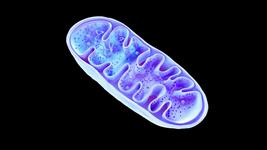CMN Weekly (31 May 2024) - Your Weekly CRISPR Medicine News
By: Gorm Palmgren - May. 31, 2024
Top picks
- Feng Shang and coworkers have elucidated the structure of the prime editor system, which combines Streptococcus pyogenes Cas9 nickase with Moloney murine leukaemia virus reverse transcriptase (M-MLV RT) and prime editing guide RNA (pegRNA). Using cryo-electron microscopy, they revealed that M-MLV RT extends reverse transcription beyond intended sites, causing unwanted edits. Structural comparisons showed a consistent M-MLV RT position relative to SpCas9 during editing. This insight led to engineered pegRNA and prime-editor variants, enhancing the precision of genome editing. These findings advance the development of a more versatile prime editing toolbox.
- A phenotypic CRISPR-Cas9 scan targeting 17,065 genes in primary human cells has revealed a 'proximity bias,' where knockouts show unexpected similarities to unrelated genes on the same chromosome arm. This bias, consistent across various conditions, is likely caused by telomeric truncations. The study introduces a correction method to mitigate this bias, impacting functional genomics, drug-target identification, cell therapies, and genetic therapeutics.
Research
- American researchers have developed a workflow using isogenic cell lines with PIK3CA mutations E545K and H1047R to identify mutation-specific targets for cancer treatment. RNA-seq and ATAC-seq revealed distinct differences, leading to a curated CRISPR knockout screen identifying AREG as an E545K-specific target. This multi-modal framework uncovers mutation-specific molecular targets, providing a strategy for treating oncogenic mutations with precision.
- A new study introduces TSPscp, a short peptide-conjugated bioreducible polymer, as an efficient delivery vector of CRISPR tools. TSPscp enhances CRISPR transcriptional activation and genome editing in vitro and in vivo by improving cellular uptake and lysosomal escape. Additionally, it facilitates minicircle DNA delivery, making TSPscp a promising tool for advancing CRISPR applications in vivo.
- Spanish researchers have developed a method to generate universal, safe anti-CD19 CAR T cells using CRISPR-Cas9 technology. By targeting B2M and TRAC genes, they reduced adverse immune responses, while the selection of less differentiated T cells improved stability and persistence. The CRISPRroots analysis confirmed effective gene knockout without off-target effects. This method could overcome the limitations of autologous CAR T therapy, enhancing treatment for B cell malignancies.
- Despite CRISPR systems' ability to modulate DNA accessibility, integrating diverse screening outputs remains challenging. PitViper, an open-source software, addresses this gap, offering an automated bioinformatics pipeline for functional screening analysis. Sensitivity analyses show PitViper effectively identifies super-enhancer liabilities in leukaemia cells via genome-wide CRISPRi screening, providing a robust tool for comprehensive data integration.
- Italian researchers have developed AlPaCas, a web server designed for allele-specific CRISPR gene editing through the identification of protospacer-adjacent motifs (PAMs). AlPaCas automates the identification of SNV-derived PAMs, which are crucial for precise targeting in CRISPR editing. By inputting gene or SNV data, users can receive a list of potential PAMs specific to the mutant allele.
- An American study has used CRISPR interference (CRISPRi) in human T cells to map cis-regulatory elements (CREs) controlling CD28, CTLA4, and ICOS gene expression. Gene-, cell subset-, and stimulation-specific CREs were identified. Integrating CRISPR knockout screens and ATAC-seq revealed trans regulators affecting chromatin states. A key CCCTC-binding factor (CTCF) boundary was found to reinforce CTLA4 interaction and prevent CD28 activation, decoding context-dependent gene regulation in T cells.
- A CRISPR-Cas9 screen of 140 membrane trafficking proteins has identified phosphatidylinositol-binding clathrin assembly protein (PICALM) as a critical player in HIV-1 replication. PICALM knockout (KO) inhibited viral entry and altered CD4+ SupT1 T cell biology, impacting intracellular trafficking, Gag protein levels, autophagy, PD-1 levels, and differentiation markers. These findings highlight PICALM's potential as a target for new antiviral strategies against HIV-1.
- A new study shows that Type II CRISPR-Cas9 systems, guided by CRISPR RNA and trans-activating CRISPR RNA, exhibit RuvC domain-dependent trans-cleavage activity for ssDNA and ssRNA. Cas9 prefers T- or C-rich ssDNA and is activated by ssDNA, dsDNA, and ssRNA. The Cas9-guide RNA complex's crystal structure reveals the mechanism for target RNA binding. These findings enabled the development of highly sensitive and specific DNA and RNA detection platforms.
- MGDrivE 3 (Mosquito Gene Drive Explorer 3) is a new framework for modelling mosquito genetic control systems like CRISPR-based gene drives. It includes three significant improvements: a decoupled sampling algorithm, the Imperial College London malaria transmission model, and a surveillance module. The framework simulates the impact of gene drives on malaria transmission and tracks mosquitoes via traps. Available as an open-source R package, MGDrivE 3 aims to enhance understanding of health impacts and biosafety.
- CRISPR-based homing gene drives use Cas9 and gRNA to control pathogens by converting wild-type alleles. Testing eleven Drosophila germline promoters, Chinese researchers have identified some with higher efficiency and minimal embryo resistance. Despite persistent somatic expression, certain promoters outperformed existing ones, demonstrating the potential for effective population suppression with minimal fitness costs.
Industry
- HuidaGene Therapeutics and Synthego have announced a licensing agreement on next-generation gene editing enzyme hfCas12Max. This partnership will streamline the development of CRISPR-based therapeutic applications, providing developers with access to highly precise, efficient, and next-generation genome editing tools.
- Cellectis announced the completion of AstraZeneca's additional equity investment of $140M. This leaves the company with a cash position of $143 million as of March 31, 2024, and a cash runway projection into 2026.
Clinical trials
Sherlock Biosciences announced yesterday the enrollment of the first participant in the PROMISE Study, a multicenter clinical trial evaluating the performance of their innovative over-the-counter (OTC) disposable molecular test for Chlamydia and Gonorrhea. Sherlock’s molecular diagnostics leverage proprietary CRISPR and synthetic biology chemistries to rapidly deliver results. The study will enroll approximately 2,500 subjects at 20 study sites across the United States and will involve symptomatic and asymptomatic sexually active lay users aged 14 years and up.
Detection
- The novel HiCASE method, a PCR-based CRISPR technique combined with a restriction enzyme, offers super-sensitive and specific detection of cell tumour DNA (ctDNA) mutations. Applied to EGFR mutations in non-small cell lung cancer (NSCLC), it achieves a detection sensitivity of 0.01% with 40 ng of cell-free DNA. In a study of 140 plasma samples from 120 NSCLC patients, HiCASE demonstrated 88.1% clinical sensitivity and 100% specificity, outperforming ddPCR and Super-ARMS assays.
- A new CRISPR RNA (crRNA)-based biosensor can detect monkeypox virus (MPXV) within 35 minutes without pre-amplification. Using multiple crRNAs targeting the F3L gene and a BSA-based nanocomposite, the electrochemical sensors achieve a detection limit of 669 fM, outperforming fluorescence detection by 15-fold. These sensors maintain sensitivity in complex biological fluids, offering a rapid, accurate diagnostic tool for resource-limited settings and various molecular diagnostics.
- Chinese researchers have developed a one-tube RPA-CRISPR-Cas12b detection system for the rapidly spreading tigecycline resistance gene tet(X4) and colistin resistance gene mcr-1. The systems achieved high sensitivity (6.25 and 9 copies) within ~55 and ~40 minutes. Effective in detecting these genes in pork and environmental samples, the systems identified mcr-1- and tet(X4)-positive strains, highlighting their potential for onsite surveillance.
- A new study has developed a rolling circular amplification (RCA)-assisted CRISPR-Cas9 method to detect metacestodiasis caused by larval cestode parasites. Targeting parasite-derived miRNA let-7-5p, this method demonstrated a detection limit of 10 aM and high diagnostic accuracy for rabbit cysticercosis and mouse Echinococcus multilocularis infections. The assay showed early detection capability (from 15 days post-infection), correlating with cyst burden.
Reviews
- CRISPR/Cas-based colorimetric biosensors: a promising tool for the diagnosis of bacterial foodborne pathogens in food products. This review assesses the current status of the CRISPR system, specifically focusing on colorimetric biosensing platforms, and discusses the utilisation of each Cas effector in the detection of foodborne pathogens.
News from CRISPR Medicine News
- In Monday's feature article, we interviewed two research groups that have independently pioneered a groundbreaking gene-editing treatment for severe immunodeficiencies, potentially transforming the lives of patients. This innovative approach targets the critical RAG1 and RAG2 genes, promising a permanent solution that could surpass traditional bone marrow transplants.
- Our sister site, WeDoCRISPR, published Wednesday Making the Cut episode 20: Epigenome Editing, which explores the concept and applications of epigenome editing - a novel method of genome engineering that modifies gene expression without breaking the DNA. It offers potential therapeutic benefits while addressing safety concerns associated with traditional genome editing techniques.
To get more of the CRISPR Medicine News delivered to your inbox, sign up to the free weekly CMN Newsletter here.
Tags
CLINICAL TRIALS
IND Enabling
Phase I
Phase II
Phase III
Recurrent or Progressive High-grade Glioma, (NCT06737146)
Sponsors:
Suzhou Maximum Bio-tech Co., Ltd.
Sponsors:
Suzhou Maximum Bio-tech Co., Ltd.
IND Enabling
Phase I
Phase II
Phase III
Advanced Peritoneal Malignancies or Abdominal Metastatic Solid Tumors, (NCT06912152)
Sponsors:
Zhejiang University
Sponsors:
Zhejiang University
IND Enabling
Phase I
Phase II
Phase III







